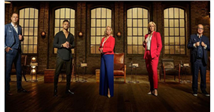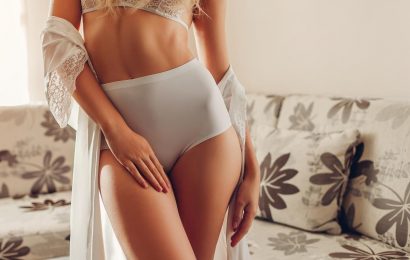The nearly hundred-year-old source material for “Lady Chatterley’s Lover” once roused calls for censorship worldwide. DH Lawrence’s novel, and now the new film (in theaters and streaming on Netflix Dec. 2) explores themes of class, relationships and sexual pleasure while remaining grounded in the time period of 1920s England.
Costume designer Emma Fryer had much to consider during her creative process: the changing seasons, the locales (London as well as the countryside), and the characters’ actual and symbolic journeys.
Clifford Chatterley (Matthew Duckett) and Connie (Emma Corrin) marry early in the film. Connie’s wedding dress underwent quite an evolution during Fryer’s preproduction preparation, starting as a period costume and eventually becoming a less structured piece from the label Needle and Thread.
Fryer recounts, “There was a lot of conversation about the wedding dress!”
Connie marries into what she thinks will be a conventional life but “there is that [underlying] spirit in her from the beginning,” says Corrin, who remembers the progression from initial fitting to on-screen debut.
“That transition from structured [to] free flowing spoke a lot about how we were figuring out Connie,” Corrin notes.
As Connie moves into the country with her husband, the London fashions eventually transition into an unquestionably lighter yet layered country-casual look. “There was a see-through quality about them,” notes Fryer, “which helped with the journey of the story and her whole journey as a character.”
Wearing the costumes helped Corrin delve into the role. “There was a real sense of stripping back all these layers, the literal and metaphorical layers, she was taking off,” they explain.
The fabrics included details like embroidery and lace, patterns and textures. “You’re making me think about the stockings,” Fryer remarks. “It was quite a journey with the stockings because we dyed lots of them to get the colors that I wanted to go with the costumes. …It’s an odd thing to say, but some of them were thicker than I would have liked [because] I did want them to be real and [to] have that silky feel.”
And by the end of the film, the costumes come full circle. “You’ve gone from heavyweight fabrics [early on] to all those lovely, floaty, sheer fabrics. Then at the end, there’s a sense of…a slightly more masculine feel [with] a kind of empowerment,” explains Fryer of the clothes’ own progress within the very traditional time period.
Connie takes full ownership of her decisions. The direction her life goes isn’t one she could have predicted. As Corrin speaks of the character: “She’s grown so much, you really see that reflected in what she wears. The more masculine element of the costumes really helped convey that strength of character.”
The story still resonates, and finds relevance, with its themes even today and in a country devoid of nobility and royal titles. “Connie goes on this journey of realizing that this [relationship and life] is something she can want for herself and something she can need and that’s okay,” Corrin notes.
Read More About:
Source: Read Full Article







